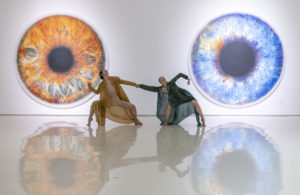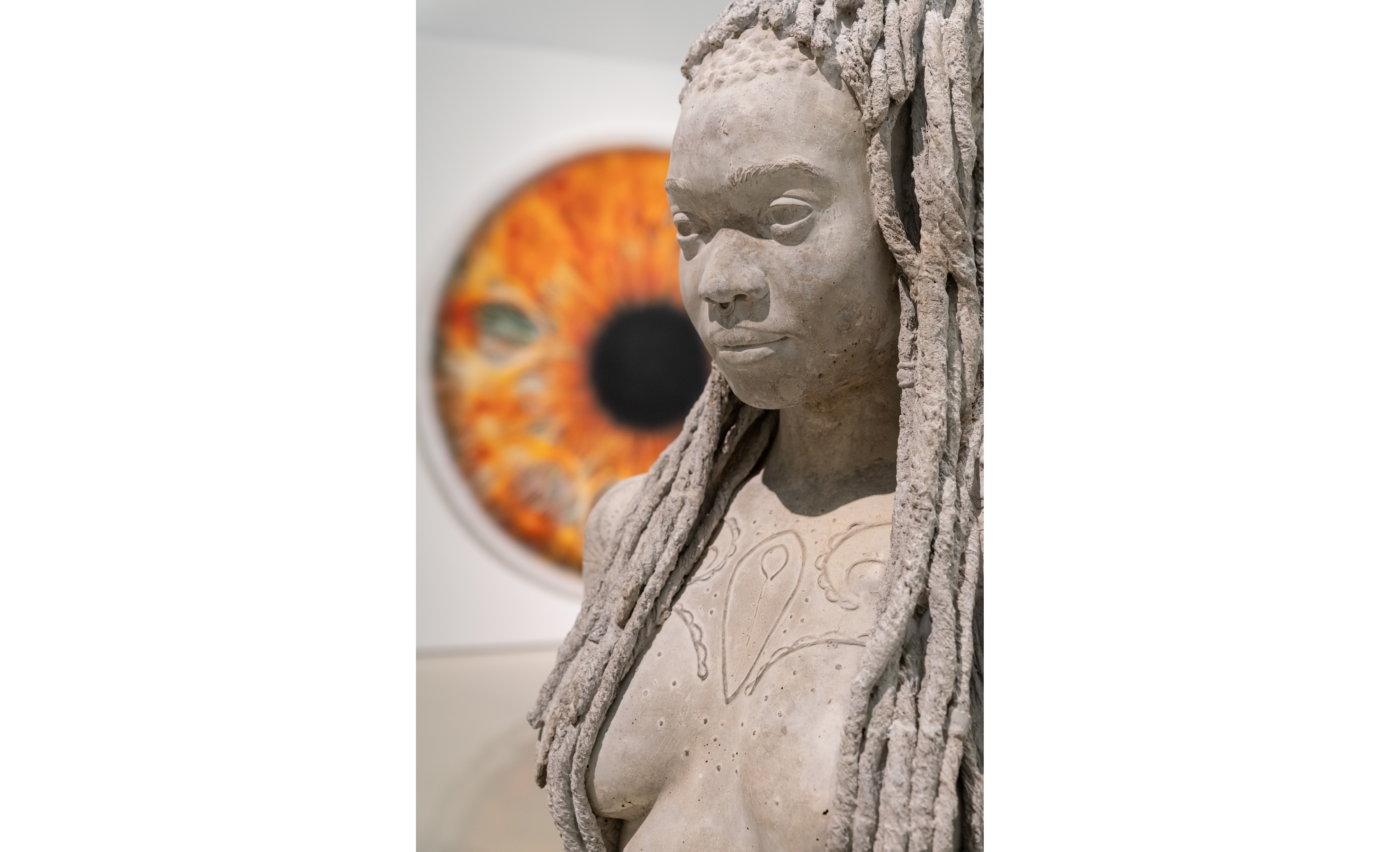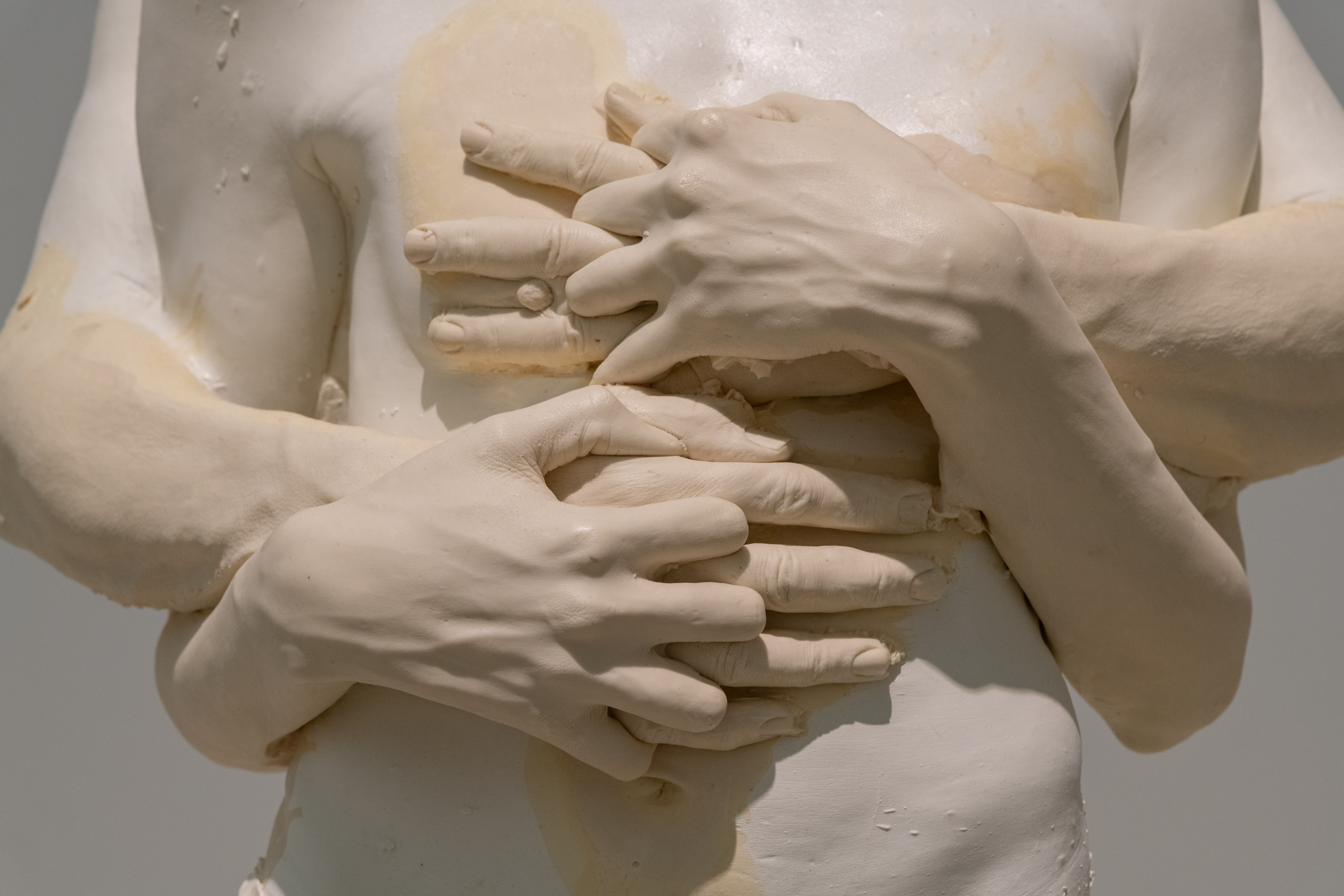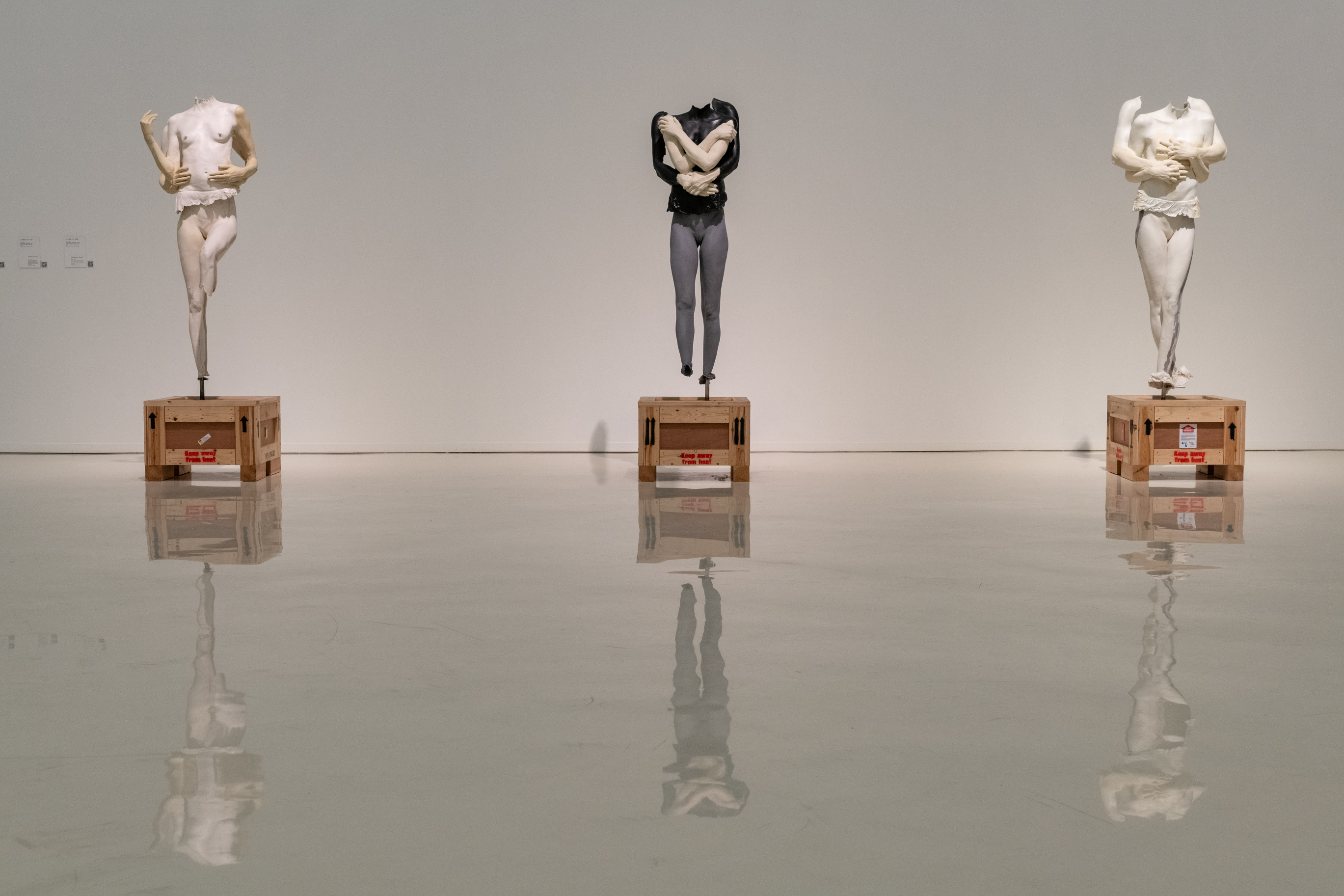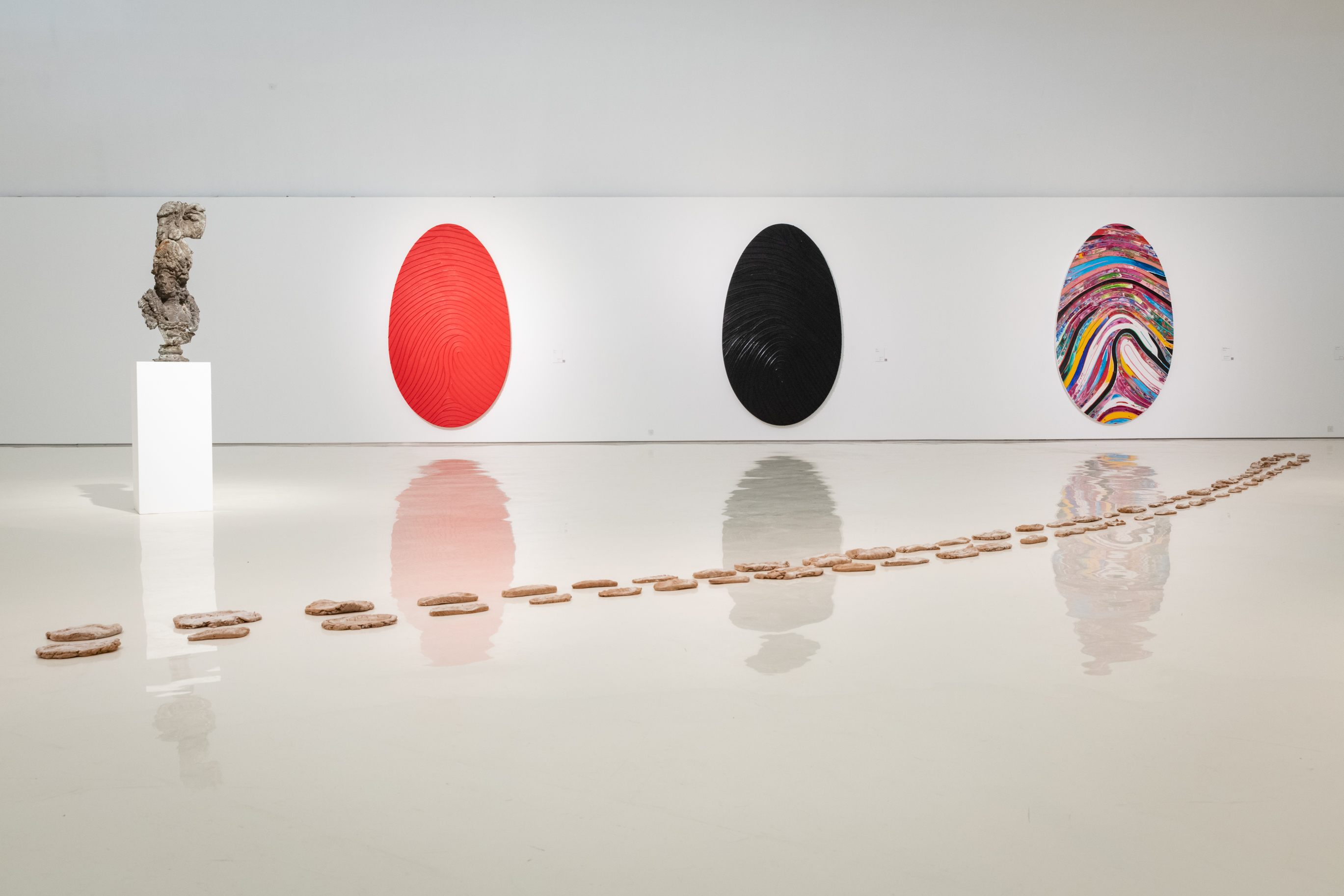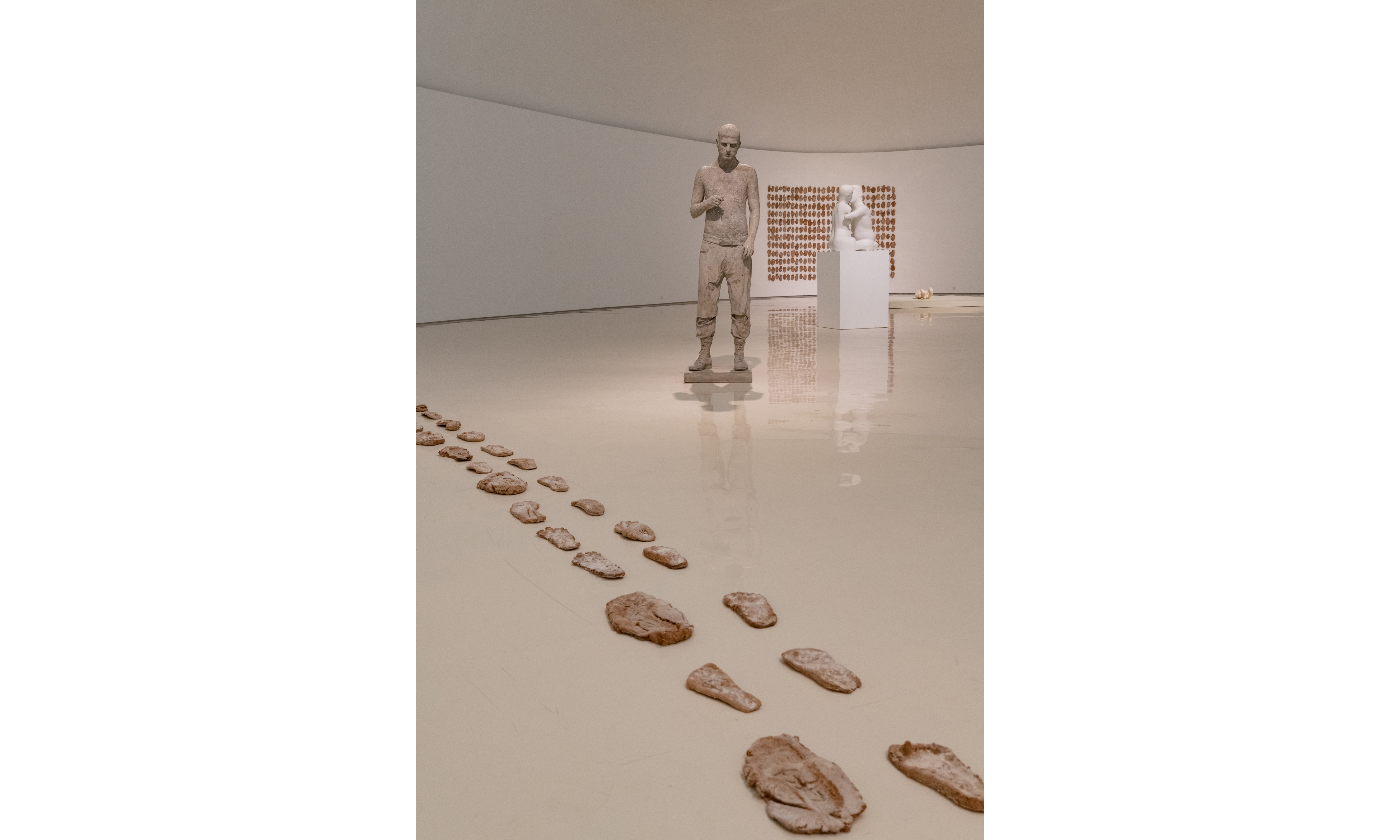‘UNDER THE SKIN’ AT CAFA ART MUSEUM
MARC QUINN’S INAUGURAL INSTITUTIONAL EXHIBITION IN CHINA
Staged at the museum of one of China’s leading art academies, The Central Academy of Fine Arts (CAFA) Art Museum in Beijing, the inaugural institutional exhibition of Marc Quinn in China has taken place from March to May 2019. Quinn’s exhibition at the CAFA Art Museum was also noteworthy for its education outreach programme to the students of CAFA and further programmes in Shanghai and Hong Kong. The foundation of a comprehensive education was a passion of Marc Quinn, himself having graduated from Cambridge University with a degree in History of Art, and he was keen for his depth of knowledge to be passed to students of art in China. Curatorial directorship was led by Professor Wang Chunchen, Chief Curator and Deputy Director of CAFA Art Museum. The exhibition was defined as a mid-career retrospective, and therefore included all the acclaimed works spanning Quinn’s career. Such an event at national level has attracted the support of British diplomatic and cultural sectors of China and was an important contribution to bilateral Sino-British relations.
One of the leading artists of his generation, Quinn’s work explores recurring themes of art and science; the human body; emotion; and the perception of beauty. For the artist’s first solo museum exhibition in China, works have been drawn from across his 30-year career and from multiple series, exploring his enduring interest in identity.
Works from the series We Share Our Chemistry with the Stars (2009) depict, at enormous scale, the iris of a human eye enlarged to the point of abstraction. The individuality of an iris and the symbolism of the human eye render each work a microscopic map of the individual’s identity. The fingerprints enlarged in Quinn’s Labyrinth series (2011-present) similarly blur the line between abstraction and figurative form, where individual identity is reduced to a pattern. These bodies of work reflect Quinn’s ongoing interest in creating portraits that are more than just an image of a person but are an actual visual index of their identity.
It is often said that our destiny is written in our palms and it was with this train of thought that Quinn first created his Bread Hands installation in 1991 where he repeatedly traced around his hand on bread, forming a pattern of his own physical identity. Despite Quinn using the same hand to create each piece, every bread hand is unique – suggesting that our destinies are changeable. For Under the Skin the artist has returned to this work to create a collaborative, participatory installation where visitors will be invited to make their own bread hands at a kiln situated inside the gallery, exploring the notion that our flesh and blood are all the same.
Quinn’s Bread Sculptures, a selection of which will be presented in Under the Skin, draw on the religious symbolism of bread as human flesh and use its transformation from a mouldable dough to a solid form to create highly expressive process-led sculptures. The identity of the characters depicted in the artist’s early works – Louis XVI (1989) and Marie-Antoinette (1989) – is warped by the process of their creation (the dough rising and falling into an organic form), reflecting the mutability of life and demonstrating how time and external forces can distort our flesh and our memories.
Inspired by the often fragmented but universally celebrated classical sculpture displayed throughout the world’s museums, Another Kiss (2006) comes from Quinn’s series of work, The Complete Marbles. Exploring society’s perceptions of beauty, these works adopt the language of idealism to represent the ‘incomplete’ bodies of people who have either lost limbs due to accident or who were born with a disability. They highlight the fact that while the notion of an incomplete body is something that is celebrated and acceptable within the context of art history, it is not always so in real life.
Evolving from Quinn’s desire to reflect the language of classical art and show how it is relevant to contemporary culture, his series All About Love (2016-2017) again uses fragmented sculptures of the human body, this time to explore emotions surrounding love. Each sculpture is a life-cast of two lovers holding one another in different poses. Without heads or faces, we are drawn to the expression communicated by their embrace and the emotion captured in their still forms.
Notions of classicism and beauty also feed into Quinn’s Body Alteration works, several which will be presented in Under the Skin including Chelsea Charms (2010), Zombie Boy (2011) and The Beauty of Healing (2014). Reflecting on life in the internet age, these sculptures depict people who have undergone major physical modifications to change their biological identity and physical form. The works explore how in using one’s body as an artistic medium, the process of alteration can transform a person’s identity, and, in turn, what is under the skin becomes outwardly manifested.
